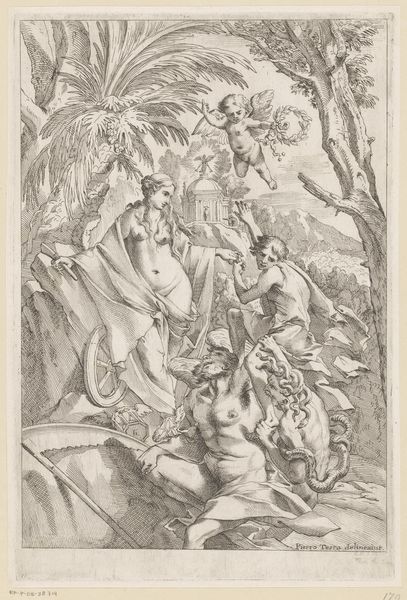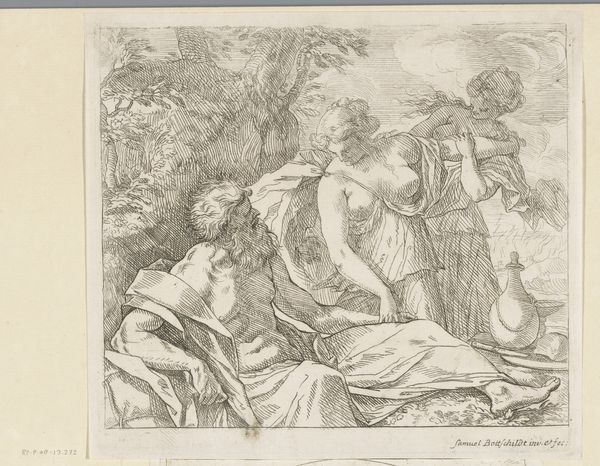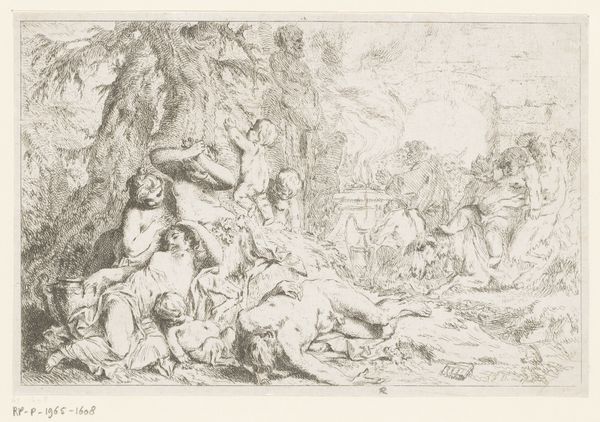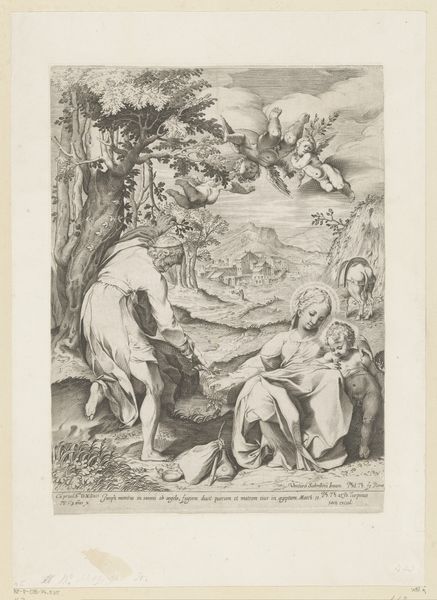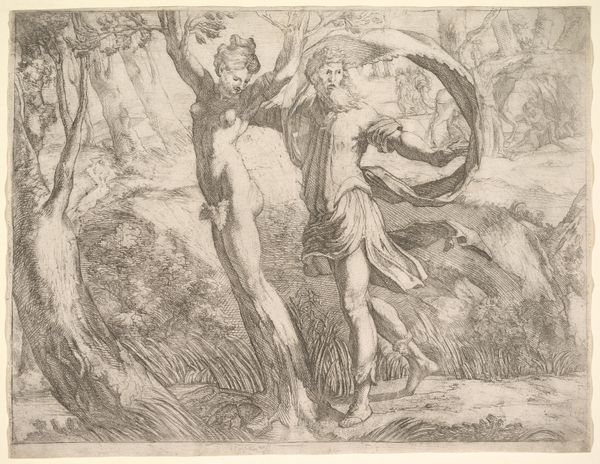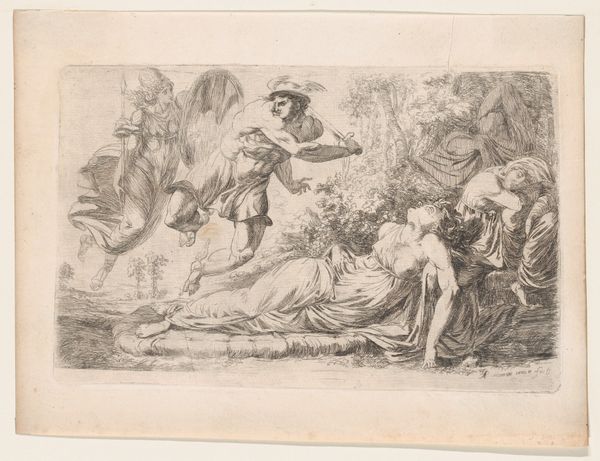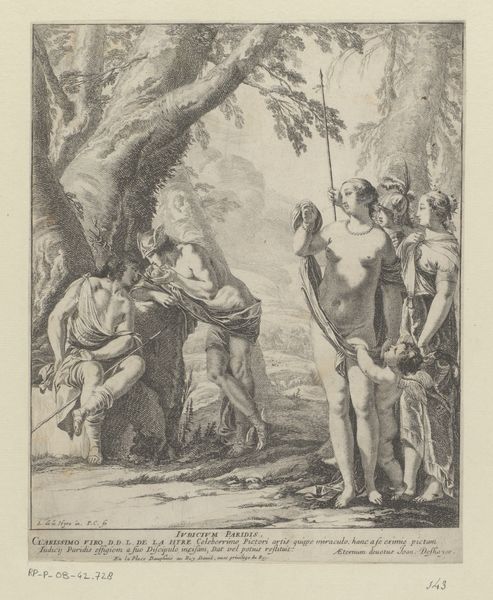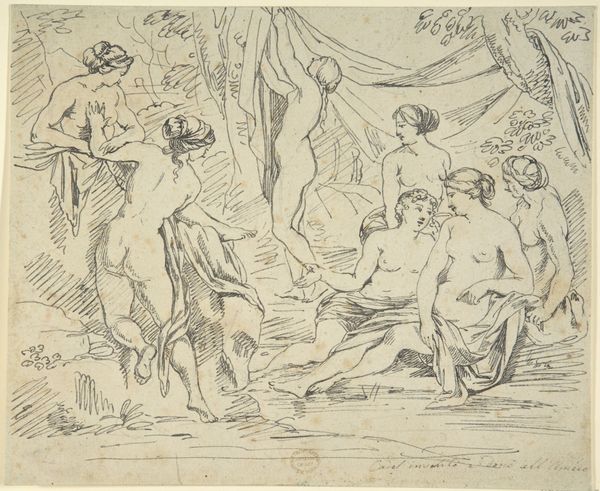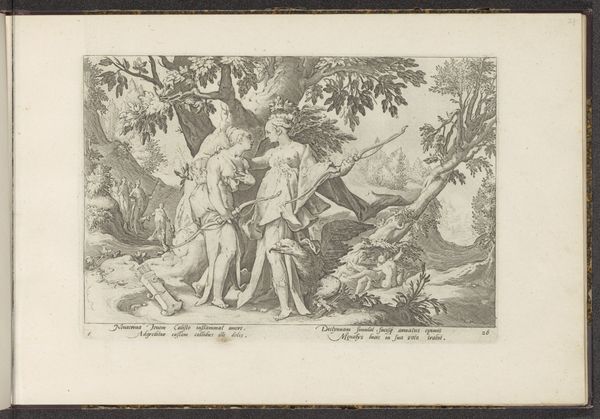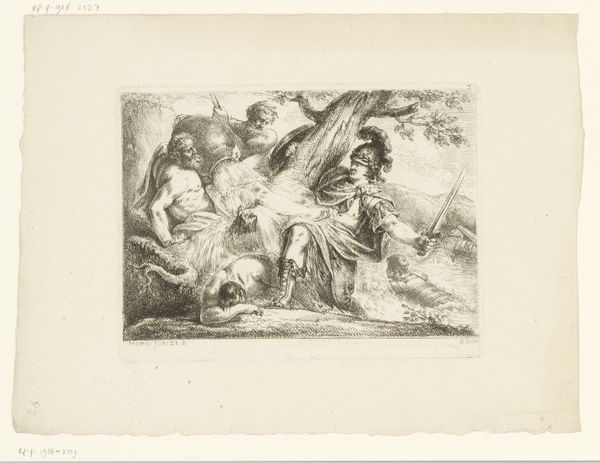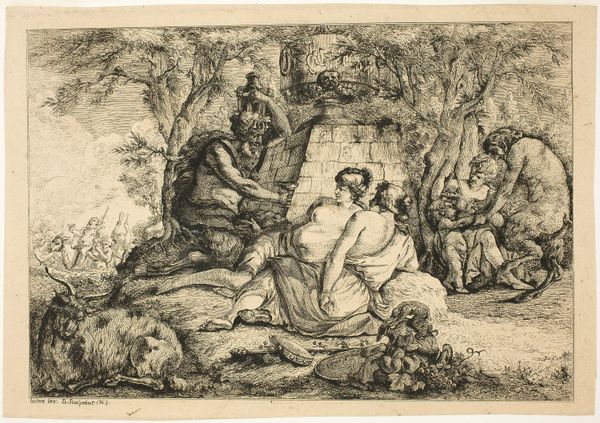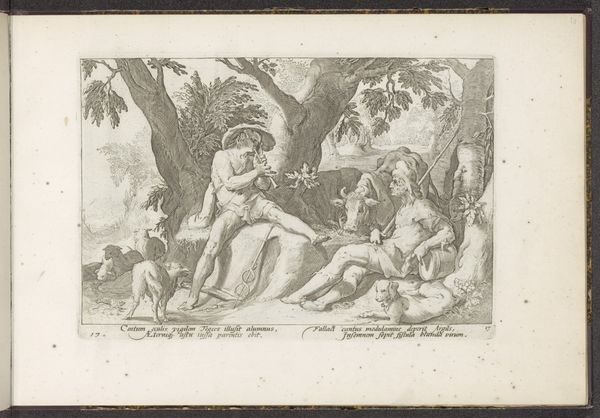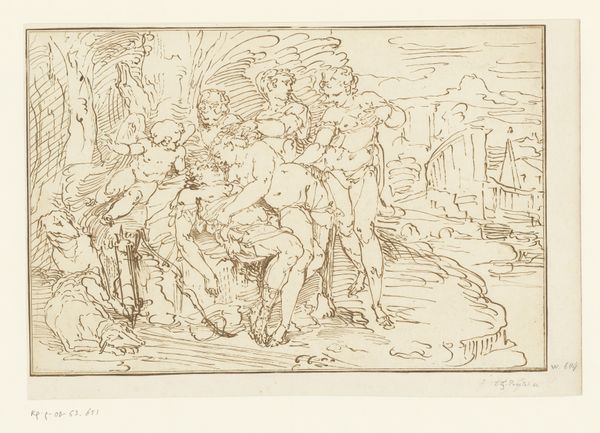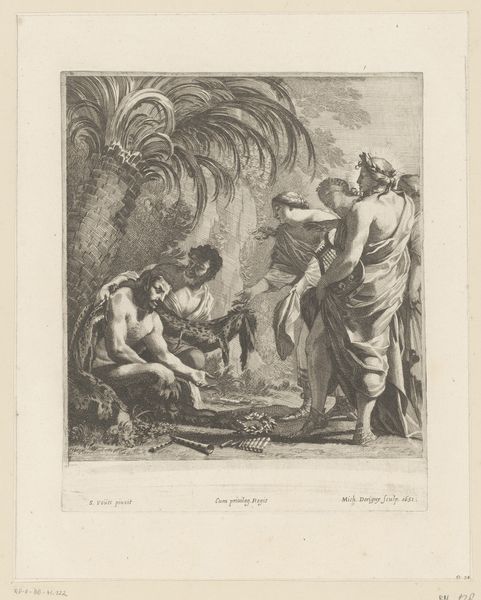
print, etching
#
allegory
#
baroque
# print
#
etching
#
etching
#
figuration
#
history-painting
#
nude
Dimensions: height 212 mm, width 295 mm
Copyright: Rijks Museum: Open Domain
Editor: This print, "Venus met Cupido, Paris en Mercurius, Juno en Minerva," made between 1635 and 1700 by Matthias Scheits, uses etching to depict a scene overflowing with classical figures. The detail achieved in monochrome is striking. How do you interpret the scene's engagement with myth? Curator: This print stages the Judgement of Paris, a critical moment, but through a 17th-century lens. Consider the power dynamics presented here: Paris, a mortal man, is given the task of judging the goddesses, shaping destiny. This isn't just aesthetic; it reflects the societal constructions of beauty, power, and female agency. What does it mean that a man decides which goddess is "most beautiful?" Editor: So it's about the politics inherent in judging beauty itself? That wasn't what I was expecting, but I see what you mean! It feels as relevant now as it must have then. Curator: Absolutely! And look closer—Minerva stands armed, Juno hovers with her peacock, symbols of their authority and realms, while Venus is accompanied by Cupid, suggesting the subtle power of desire and seduction. Think about the viewers of this print—were they invited to participate in this judgement, reinforcing its values? Does this imagery normalize the objectification and comparison of women? Editor: It's uncomfortable how contemporary it feels, considering its age. Seeing those old mythologies used to justify things back then really makes you think. Thank you! Curator: Precisely. Engaging with these works reveals their complicity in power structures. The point is to question them, understand how these visual languages operate and affect us today.
Comments
No comments
Be the first to comment and join the conversation on the ultimate creative platform.
